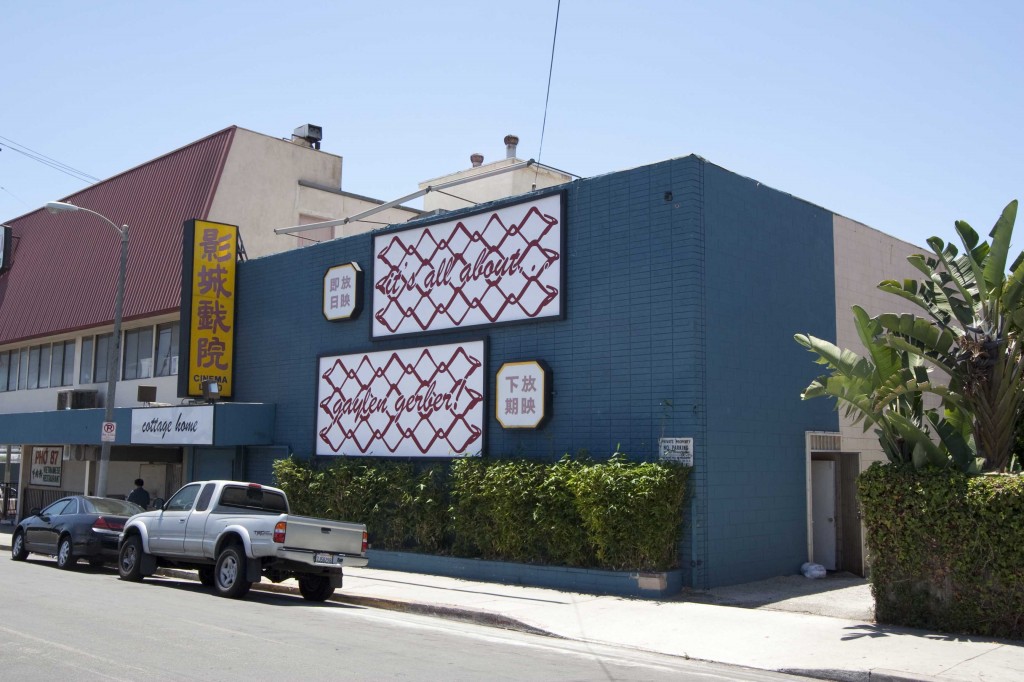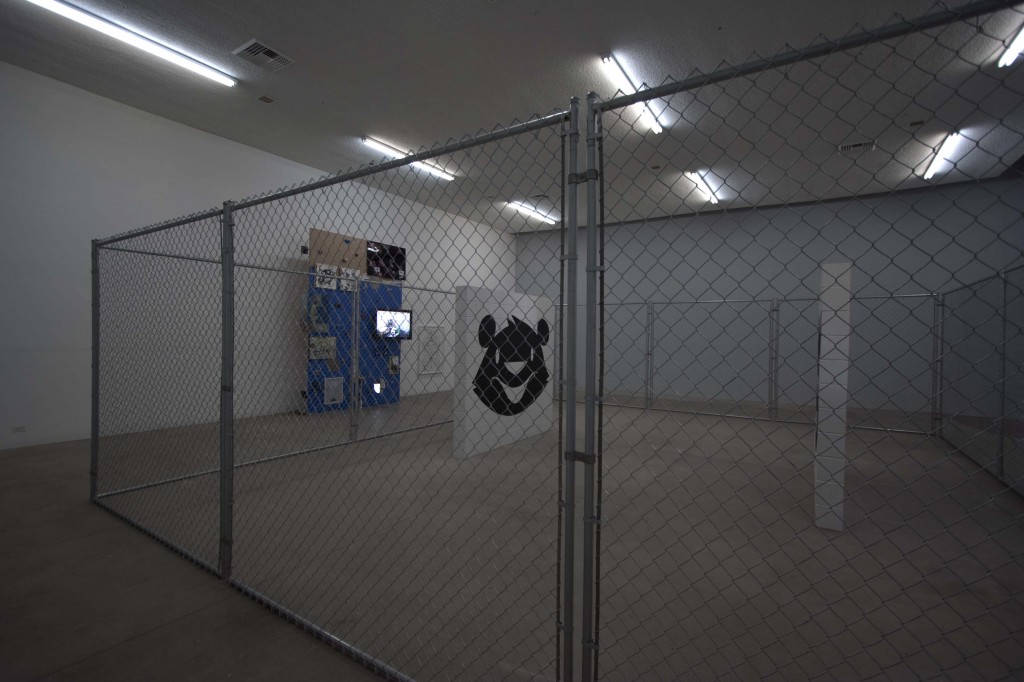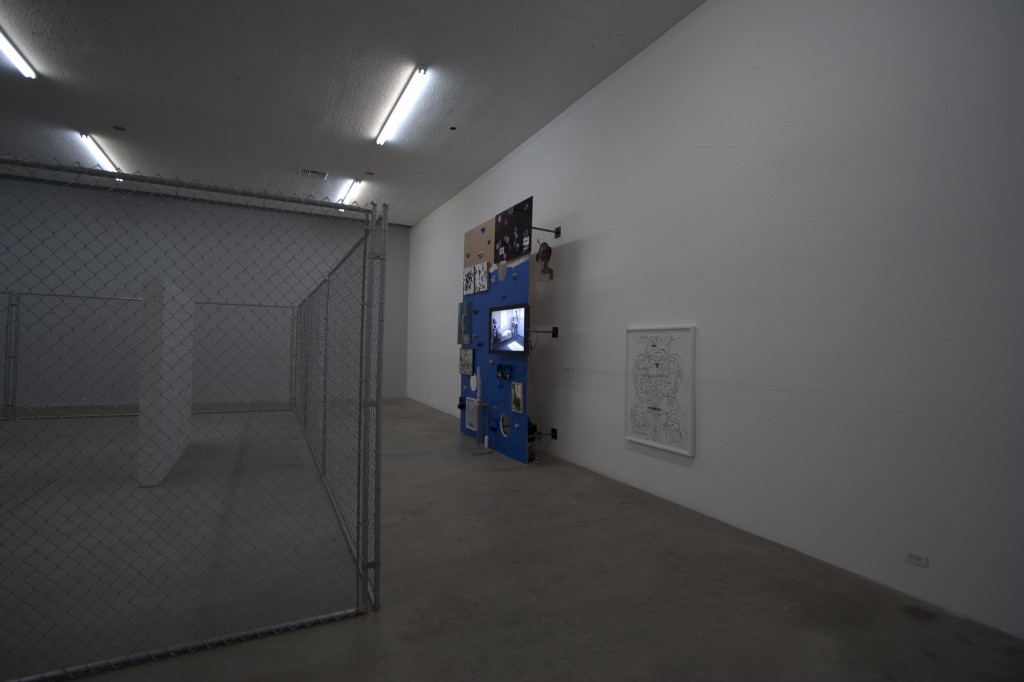If you type the phrase “I need support” into Google, the first hit is a letter addressed to “Dear Sugar.” Sugar is the advice columnist for the Pop Sugar spin-off Très Sugar and in this particular letter, a mentally unstable woman called “Depressed and Unsupported Debra” explains her desire to distance herself from her long-time boyfriend. She believes refusing the support he has offered her will protect him from her and ultimately save their relationship. But refusing him has left her feeling lonely. And unsupported.
Support Group, an exhibition organized by Thomas Solomon Gallery and held in Chinatown’s cavernous Cottage Home space, indulges the structures, intimacy, isolation, selflessness, and selfishness wrapped up in the word “support.” Curated by critic Michael Ned Holte, who calls the show’s title a pun in his curatorial statement, Support Group is a collaboration between Chicago-based conceptualist Gaylen Gerber, L.A. artist Kathryn Andrews, and L.A. artist Mateo Tannatt. Tannatt used to run an exhibition space called Pauline out of his Hollywood apartment, and Andrews still runs an exhibition space called Apartment 2 in Eagle Rock. Gerber, best known for enlisting other artists to put their work on top of walls and canvases (he calls his canvases “supports”) that he first paints gray, practically is an exhibition space and, in some ways, Support Group, pays homage to his work.
A former theater, Cottage Home has a boxy blue exterior that Kathryn Andrews takes advantage of, posting two printed billboards that make the gallery’s outside wall look especially festive. These billboards announce that “it’s all about Gaylen Gerber” in red lower-case script that dances across a chain-linked pattern. The shout-out either gets the exhibition off to a supportive start, or suggests a hierarchy. If it’s all about Gaylen Gerber, then are Andrews and Tannatt here to support him? Or is he supporting them?
Inside the main gallery space, Gerber has painted three expansive walls gray but left the back wall, the one you see from the entrance, white. This way, he controls the room’s atmosphere, but lets others be the focal point.
A chain-link fence installed by Andrews closes off most of the gallery central floor space. Two white brick walls with caricatures of grinning cartoon bears painted on them stand in the middle of the fenced-off area. The caricatures face each other and seem completely self-contained. They have all the support they need, which means that, for viewers, circumventing the fence and heading to the back wall to see Mateo Tannatt’s Monster Model: Blue Screen Version makes the most sense.
Monster Model takes up about as much space as a small wall in a claustrophobic studio apartment. Covered by a network of rectangles and circles, each contributed by an artist involved in Pauline, it resembles a haphazardly oversized computer chip. A video by Kenneth Tam called I no longer worry about shoes being worn inside the house shows the artist and a man named Jeffrey, who wears a wife-beater, bending between and around each other’s limbs, as if playing an inverted version of Twister in which the goal is to touch each other. Clearly, Tam has organized this encounter, though Jeffrey willingly participates. At one point, Jeffrey says, “A support is going on your head,” and then teaches Tam to do a headstand.
Below Tam’s video, visible through a circular hole in the blue screen, is a fetish film by Leigh Ledare in which the director issues trashily supportive compliments to his actress. “Very nice,” he says. “You look like a confection.” A photograph by Alex Klein shows a white balloon floating above a dormant brick that supports it by limiting its movement. Climbing wall holds installed by Piero Golia weave up Blue Screen, giving the installation formal, surface-level cohesion, functioning like the numerals do in Twombly’s In Depth. Apparently, someone climbed these at the opening, making gallerist Thomas Solomon nervous but proving Monster Model could support human weight.
When “Dear Sugar” responds to “Depressed and Unsupported Debra,” she tells Debra to stop being too hard on herself. Depression can not be controlled. But what Sugar does not say is that support can be controlled. You can control how much you give, how much you take, how much structure you impose, and how many strings you attach. Support Group plays with the boundaries of control but still manages to be validating. It’s a show that needs the support of its viewers who much notice (or not notice) the wide gray walls, associate the idea of coherence with climbing holds, and feel alienated by a chain-link fence.







